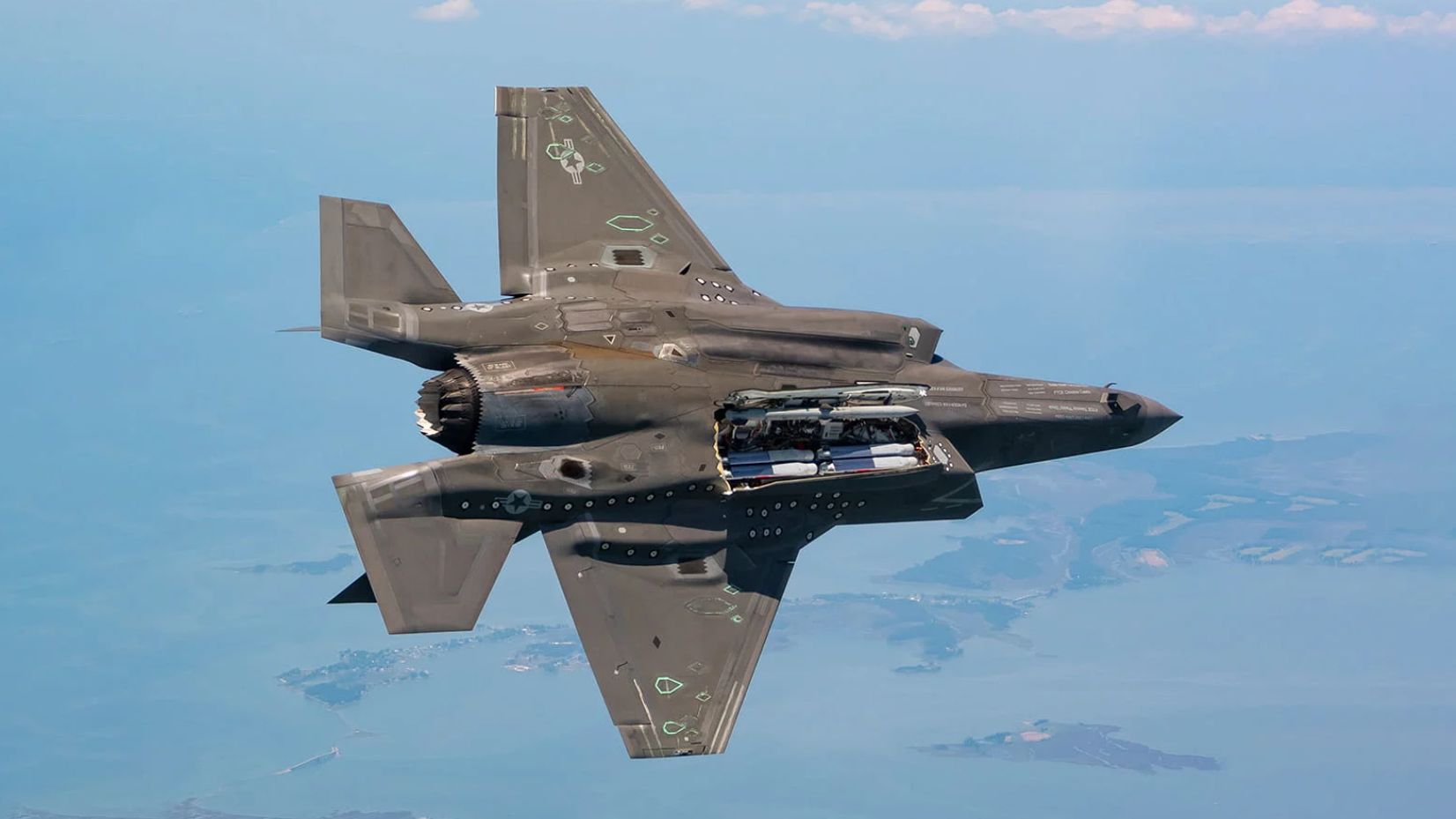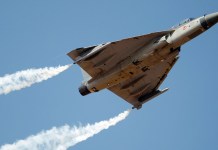The US-origin F-35 Lightning II is now fully certified to carry nuclear weapons, making it capable of delivering nuclear strikes. The nuclear certification is not only a historical milestone for the stealth jet but is, more importantly, an effective deterrence against Russia and China.
Germany, for one, appears to be particularly pleased with the announcement. The German Luftwaffe said that obtaining nuclear certification for the Lockheed Martin F-35A Lightning II Joint Strike Fighter (JSF) was a key factor in their decision to purchase the aircraft.
The Joint Program Office’s (JPO) crucial decision to grant the F-35A its nuclear operational certification ahead of schedule was hailed by the Luftwaffe in a statement released on March 13. “[This is] quite important for our procurement of [the] F-35. This hurdle has also been overcome,” it wrote on social media site X (previously Twitter).
Germany announced its decision to buy the F-35 stealth fighters in 2022 in the wake of the looming Russian threat triggered by the invasion of Ukraine. After years of reluctance, a deal for the purchase of 35 F-35 fighter jets was signed with the United States.
Experts had stated then that the decision may have been influenced by the need for interoperability with other NATO allies who had also bought the fifth-generation fighter in recent years.
Durchaus wichtig für unsere Beschaffung der #F35. Damit ist auch diese Hürde genommen. @LockheedMartin https://t.co/xgGhkCwFHE
— Team Luftwaffe (@Team_Luftwaffe) March 13, 2024
Additionally, Russia’s invasion of Ukraine triggered a rethink in strategy in Germany, which did not anticipate a conventional armed confrontation to break out in Europe again.
With the F-35A now obtaining nuclear certification, the Luftwaffe may be able to equip the B61 bombs on its jets if it is allowed to host those nuclear weapons. This is significant as Russia has been sending ominous signals about a possible nuclear strike against European countries.
In days following the invasion of Ukraine in late February 2022, Russian President Vladimir Putin asked his nuclear forces to be on high alert, raising concerns about the possible use of nukes. Intriguingly, Germany announced it had decided to buy the F-35 from the US in March 2022.
Russian President Vladimir Putin had issued a warning to Western countries, stating that Moscow possessed the ability to attack Western targets and that sending forces to fight in Ukraine would put them at risk of sparking a nuclear war.
The crisis in Moscow’s relations with the West — brought on by the war in Ukraine — is at its worst since the 1962 Cuban Missile Crisis. Putin’s warning about the risks of a direct conflict between Russia and NATO was one of his clearest threats.
Against this backdrop, European operators of the F-35A aircraft are welcoming the aircraft’s nuclear certification for nuclear deterrence.
Even though Germany does not have nuclear weapons, NATO’s ‘Nuclear Sharing’ doctrine enables members without nukes to participate in NATO’s nuclear deployment. As of now, Belgium, Germany, Italy, and the Netherlands have access to other B61 family weapons provided by the United States.
F-35 Can Deliver A Nuclear Strike
Russ Goemaere, a spokesperson for the F-35 Joint Program Office, announced the nuclear certification on March 8.
According to Goemaere, the certification was attained on October 12, 2023, ahead of the timeline pledged to NATO allies for completion by January 2024. With this achievement, F-35As are now designated as “dual-capable” platforms — operating in both conventional and nuclear warfare scenarios.
Unlike the US Air Force’s F-22 Raptor, which is largely focused on air-to-air combat, the F-35A was built with tactical nuclear strike capability from the ground up.
The aircraft is only allowed to carry the B61-12, which is an upgraded variant of the 1960-introduced B61 free-fall nuclear bomb. The delivery schedule for B61-12s to Europe is still unknown, despite Politico’s earlier claim that the bombs would be sent in December 2022.
In November last year, the Netherlands announced that it had obtained “initial certification for the deterrence mission,” suggesting that some of the F-35A stealth fighters that are part of NATO’s fleet were getting closer to being fully nuclear-capable.

The US Air Force has not yet disclosed if any other country or its F-35As have received certification to deploy the B61-12. The US Air Force completed the necessary flight testing, which was meant to evaluate whether the B61-12 nuclear bomb was compatible with F-35A, in 2021.
The B61-12 is a 12-foot-long, 825-pound bomb with an inertial navigation system (INS) guidance kit. It consists of refurbished parts (all with different yields) and new parts (such as the precision guiding tail kit) from the earlier B61 models.
B61-12s will likely replace the 150-odd earlier B61 versions that are now housed at six locations in Europe. These bombs are stationed in Belgium, Germany, Italy, and the Netherlands.
:quality(70)/cloudfront-us-east-1.images.arcpublishing.com/archetype/UD2ZX53GB5AI5D6HQYBCJ4X5CY.jpg)
Eventually, the F-35A will replace the older jets in the United States and NATO as dual-capable fighter jets. This has been reflected in the zeal shown by the US in fitting and testing the weapon on a Royal Netherlands Air Force (RNLAF) F-35A.
In Germany, the F-35s will replace the Tornado combat jets, which were designed to carry nuclear weapons. As part of a NATO nuclear weapons-sharing arrangement, the United States gives Germany around 60 tactical B61 nuclear bombs. Until now, it has been understood that the Luftwaffe Panavia Tornado jets would deliver the bombs kept in storage at Büchel Air Base if the need were to arise.
It may be fair to assume that the F-35A joining the Luftwaffe would be entrusted with a similar responsibility once Germany is provided with the newer B61-12 bombs.
The Luftwaffe seems delighted at the F-35’s nuclear certification since military analysts have noted that if at all a nuclear strike has to be conducted, it should be done with a stealth aircraft since it has a lower radar signature and could complete the strike without being detected. Additionally, it has the range to deliver a long strike.
- Contact the author at sakshi.tiwari9555 (at) gmail.com
- Follow EurAsian Times on Google News




